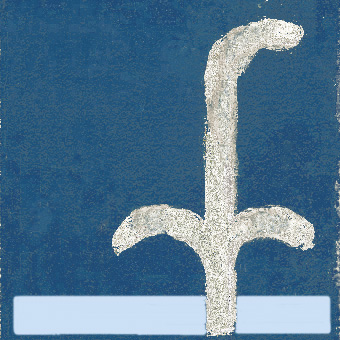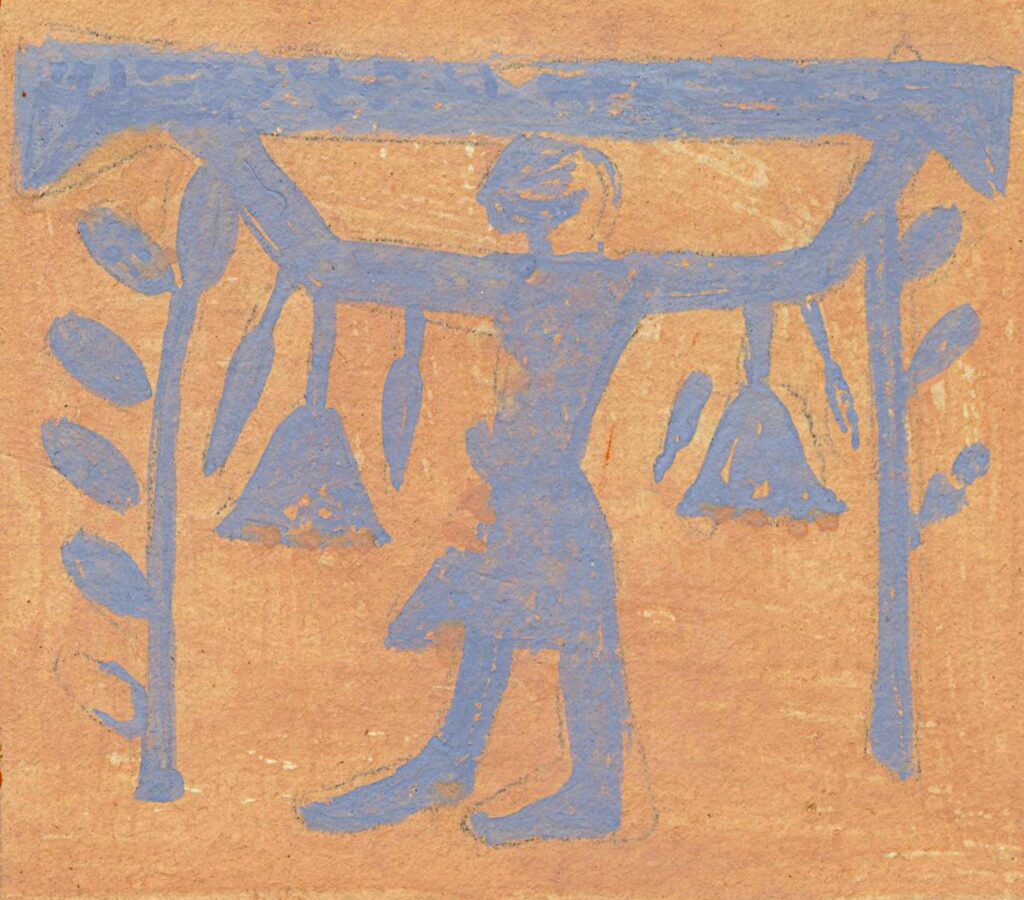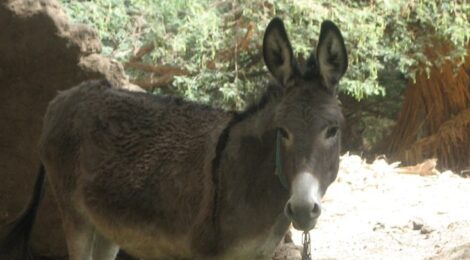
Animals – 7: Horses and donkeys
Author: Susan Biddle.
Myrtle Broome’s love of animals shines through many of her letters. This post is one of a series looking at the animals she encountered during her eight years in Egypt working with Amice Calverley at the Temple of Seti I at Abydos, and focuses on the horses and donkeys ridden by Myrtle and some of those whom she knew.
Myrtle was a keen horsewoman in England, and this stood her in good stead in Egypt. She took every opportunity to ride a horse herself and described the other horses she encountered in appreciative detail.
On 6 January 1931 Myrtle and Nannie, the Syrian housekeeper, together with an escort of three of their servants, attended part of the Coptic Christmas Eve service in the church of a small Coptic community in the desert nearby. After describing the ceremony to her mother, Myrtle continued: “as we were leaving, we met the local police officer going his rounds. He insisted on escorting us home, & offered me his horse to ride while he walked with Nannie. You may be sure I did not refuse, so I mounted & went on ahead with one of the soldiers. It was a lovely horse, an Arab of course, he was very prancy, probably because he thought he’d something very strange on his back. I was home long before the others & I did enjoy it. It seems years since I’d been on a horse”.
Myrtle admired horses, even when she could not ride them herself. In April 1931 Myrtle and Amice attended a religious festival held at Beni Hamil, where they watched a display by local horsemen. She told her mother: “the first group we saw were charging madly at the brick wall of one of the tombs. They would rush towards it full gallop, bringing the horse to a sudden stop a couple of yards away, it was marvellous horsemanship. The horses were of course pure Arabs. They had gorgeous saddles, many covered with plates of pure gold, & they had their own music, wild shrill pipes like the squealing of stallions played to the rhythmic beating of drums. This special music is never played except for the horses, & they love it. They prance & toss their manes & are never still a moment while it is being played, but when it stops they stand as quiet as anything”. She continued: “it was pretty to watch the horses dancing, their movements guided by the long lances their riders carried. They circled & pranced & reared & knelt, & all the time the men playing the pipes & the drums danced in & out with them”.
While in Cairo at the start of their third season, Myrtle and Amice stayed with Hermann Junker at his house near the Pyramids, where he was working. One afternoon they “went for a ride on two Arab horses belonging to a sheikh in a neighbouring village. It was gorgeous. They went like the wind, & got so excited that they would do nothing but gallop as fast as they could all the time. It was easy going through the desert sand, but I hadn’t ridden for so long that I was quite tired when the hour was up, but I did enjoy it”.
Both her knowledge of horse-riding and her sewing skills proved useful when Myrtle stayed with Reginald (Rex) Engelbach and his wife Nancy whilst in Cairo at the start of following season. She reported to her mother that “Rex is very busy trying to find out how Tut[ankhamun]’s horses were harnessed to the chariots. He is having a small model made. I have been helping him with the reconstructions. Tomorrow we are having all the actual fragments of the ancient harness that remain to see if we can discover how they were buckled or tied on – it is very exciting. I have made a stuffed horse out of Nancy’s rag bag, & we are making a pattern set of harness from the reliefs of chariots & horses of that period, & when we have worked it out it will be sent to a saddler & he will make a set of harness to fit the horses for the model. My stuffed horse has caused a lot of fun, of course he is only to experiment on until the model horses are ready. He is most accommodating as one can stick as many pins in as one likes”.
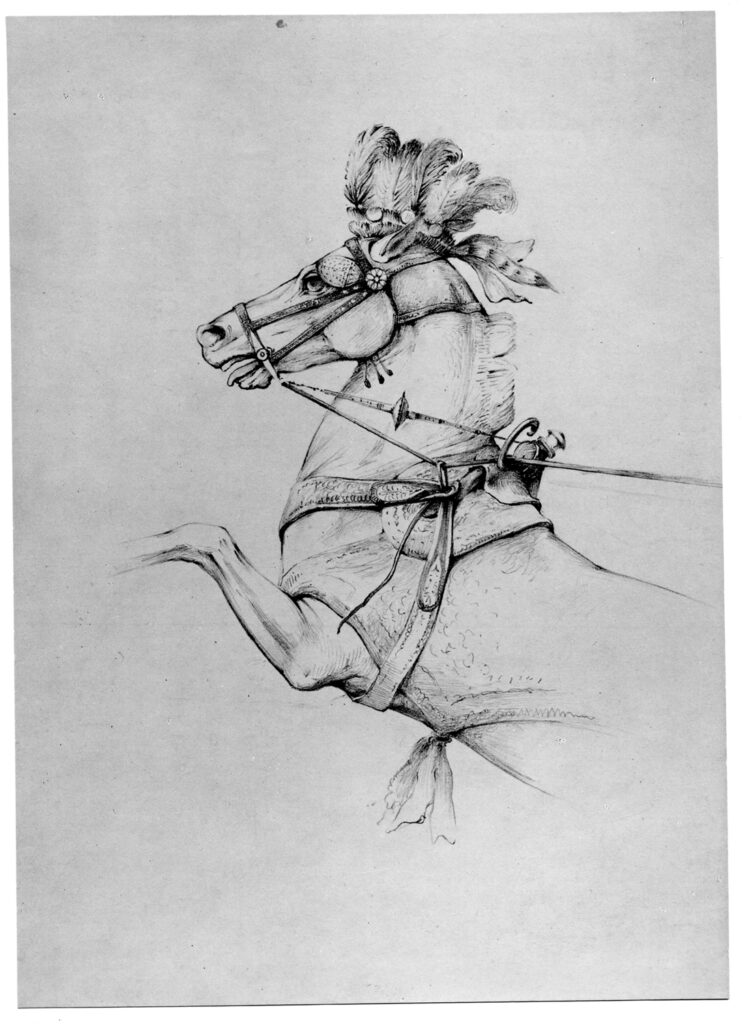
Bottom: A drawing of a horse in harness; from Howard Carter’s notes on Tutankhamun’s chariots (TAA I 3.8.7)
© Griffith Institute, University of Oxford
In March 1935 Myrtle took a short holiday to explore the villages in the Dakhla Oasis. Five miles beyond the village of Kasr, the last village of the oasis, she came to a hot spring that watered “a marvellously fertile patch of land right at the foot of the mountains”, where she found “a beautiful young Arab horse grazing in one of the fields”. She told her mother that “it let me go up to it & fondle it & it seemed quite used to being petted”.
Horses rarely came Myrtle’s way however, and donkeys or mules were the more regular means of travel and transport. The team usually rode on donkeys between the dig house and the Temple of Seti I. In November 1929 Mrytle and Hugh Calverley, Amice’s brother and responsible for photography and the electricity generator, enlivened their usual lunchtime “commute” with “a wild donkey race, with all our escort running yelling at our heels, it was fun. These little donks gallop full tilt down the sand hills & we have to balance on their backs somehow. Of course they take their time climbing up the next rise, then away they go again when they are over the top”. It was mules which drew the cart carrying the generator to a barge on the Nile when the generator had to go to Nag Hammadi for repair.
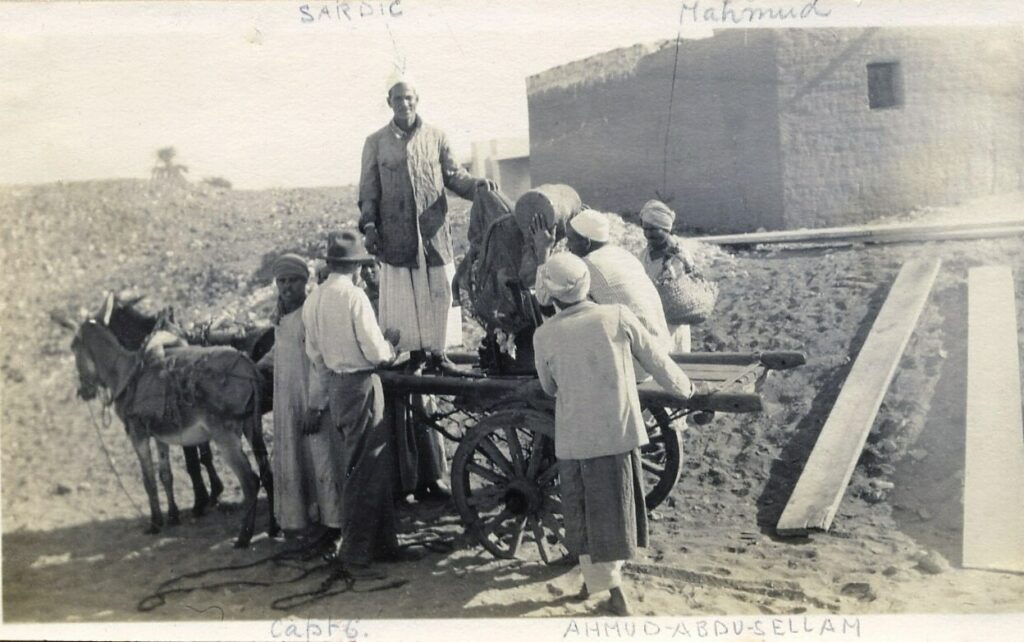
Photograph by Myrtle Broome (1930)
Bushey Museum & Art Gallery
They used donkeys for many of their expeditions on their weekly day off. Until the second season, when Amice took her Jowett car (“Joey”) out to Egypt, they had no other private transport. Even when “Joey” was available, they often preferred to ride donkeys for local journeys and expeditions into the desert. In January 1931 Myrtle told her father that “today being our day off, we had donkeys & rode along the desert to the foot of the cliffs where we had noticed some interesting holes”. The donkeys were left in the charge of one of the men who had escorted them, while Myrtle and Amice clambered up to find “the holes were either tombs that had been started & then abandoned because the limestone was not specially good, or else quarries that were not used for the same reason”. They were excited that “in one of these holes we found the name of Pepy, one of the early kings of Egypt”. The next month she told her mother about a desert picnic they had enjoyed with two young geologist friends, Mr and Mrs Sandford, who were conducting a survey of the Nile valley and collecting data for an early history before Neolithic times. Myrtle recounted that “Sardic [the head servant] provided his lady donkey & found two others”, explaining that “we have to have donks of one sex otherwise the noise is deafening; also manners may be a little unseemly”. As a fourth female donkey was not available, Myrtle herself rode a camel. It seems they usually used female donkeys (jennies).
In February 1934 Amice and Myrtle went by car to Akhmim to visit some cotton and silk weavers, and Myrtle then had lunch with her former Arabic teacher in his village nine or ten miles away. For this journey she “was provided with a superb donkey, jet black with a green plush saddle” and, together with her teacher Sheikh Sarbit, his uncle, a friend and a few others, all “trotted along through the cultivation in the most matey manner” to Sheikh Sarbit’s home.

Jerome Bon from Paris, France, CC BY 2.0, via Wikimedia Commons
When Myrtle and Amice rode camels, their servants and a soldier from their 3-man guard often accompanied them on donkeys or asses (wild donkeys), usually sharing them and taking turns to ride. Myrtle was struck that Sardic “just leads [his donkey] by putting his arm round its neck, no halter or neck rope”. However the donkeys were not always so compliant. In December 1929 Myrtle told her father: “Sardic’s donkey caused a lot of fun this morning. He brought it round the house for its drink of water as usual … but today the donk didn’t want to return to his stable. He broke away from Sardic & galloped round & round kicking up his heels & braying at the top of his voice. Sardic tried to coax him with melon peel, but donk wasn’t having any. He jumped about like a young goat, & finally all our domestic staff had to turn out to catch him”. A year later Myrtle told her mother that Sardic “has got a new donkey, a young lady. We each had a ride on her yesterday. She trots along splendidly, it is quite difficult to get her to stop. Her name is Azzize which means “Dearest”; she is snow white & has a gaily embroidered saddle cloth”. Two years later Sardic was riding another ass which he had named “my darling”.
Myrtle was charmed by many young animals, including foals. In March 1931 she indicated to her mother that “the donkey I ride now is a lady, & she has a baby. Yesterday it came with us, & galloped & kicked up its heels all over the place. It is a darling, baby donks are so pretty & so full of fun & mischief”. In April 1935 the ass belonging to her second Arabic teacher had a foal “a month old [who] trots along beside her mother & plays about on the tennis court while I am having my lesson. She is very welcome here & everyone has taken her photograph. Baby donkeys are so pretty, this one is a very soft grey, with fluffy ears & a Victorian fringe over her eyes & such dainty little hooves. Her mother is white & looks very well cared for”. When Myrtle arrived at the dig house for the final season in November 1936, she gave her mother news of Sardic’s family, including the fact that “Sardic’s donkey has got a baby a few weeks old. It was brought to visit us. Of course we simply adored it, it was quite friendly & sucked my fingers”.
Sources:
Letters: 33, 40, 41, 45, 53, 99, 103, 109, 117, 135, 127, 132, 144, 178, 179, 194, 234, 243, 270, 329, 332, 374, 382.
With thanks to:
- the Griffith Institute, University of Oxford, for the opportunity to work on the Broome collection, and for their ongoing support for this blog, and the images from their Tutankhamun collection
- the Bushey Museum & Art Gallery, for Myrtle Broome’s photograph
- the Artefacts of Excavation project, for biographical details about Reginald Engelbach
- the Digital Giza project, for information about Hermann Junker
